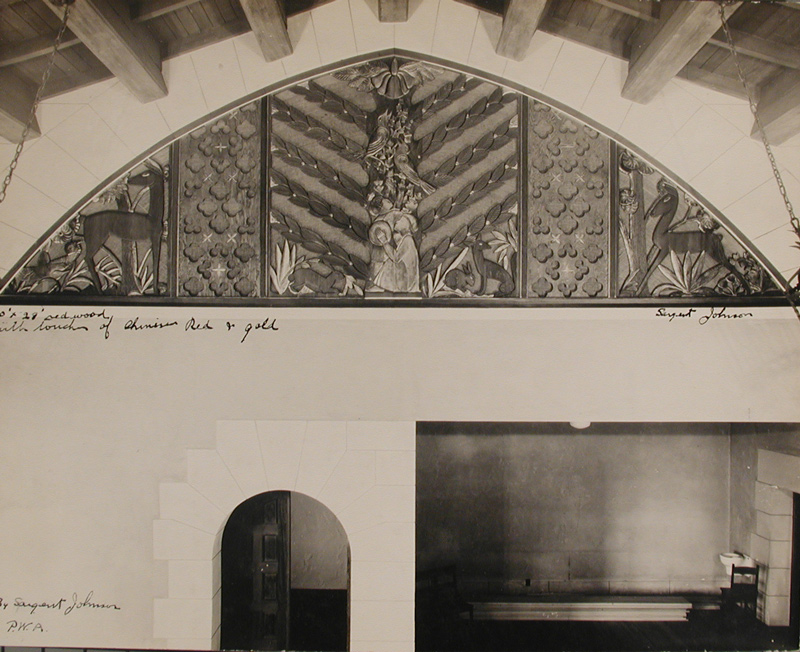The Huntington’s blog takes you behind the scenes for a scholarly view of the collections.
Monumental and Melodious
Posted on Fri., Oct. 11, 2013 by

The newly installed screen by Sargent Claude Johnson in the Virginia Steele Scott Galleries of American Art.
You may recall a curious story about lost-and-found art that ran in The New York Times last year—a news piece that explained how a long overlooked monumental sculpture of celebrated artist Sargent Claude Johnson (1888–1967) emerged from decades in storage before getting snapped up by The Huntington’s Art Collectors’ Council in 2011.
Indeed, the day has come for The Huntington to place the sculpture on display. Following a meticulous round of conservation to ensure its stability, it is ready for its close-up. It will be on display this Saturday, Oct. 12, through Jan. 20, 2014, in the Susan and Stephen Chandler Wing of the Virginia Steele Scott Galleries of American Art, and then it will come back on view in July 2014 when The Huntington opens its newly expanded display of American art.

Johnson's screen as it appeared at the California School for the Blind, ca. 1930s–40s. (Source: The Harmon Foundation Collection. Still Picture Collection, National Archives, College Park, Md.)
One of the San Francisco Bay Area’s first nationally acclaimed African American artists, Johnson was commissioned in 1937 by the Works Progress Administration of the New Deal to carve the screen for the California School for the Blind, then located in Berkeley.
Done in redwood, the sculpture features children in an Eden-like forest setting, where rabbits and a fox gather peacefully. In the side panels, “deer perk up their ears, as if listening to the concert in the central panel,” explains the accompanying text label in the gallery. In Johnson’s hands, music bridges the animal and human worlds. Originally installed in the School for the Blind’s Music Hall, the screen depicts music as a medium of universal communication, echoing the heavy emphasis that blind education once placed on music instruction.

A rabbit and a fox share a peaceful moment in a detail.
One of the most striking aspects of the screen is the use of the grain of natural redwood and gilding applied over red paint to amplify the legibility of the forms. In an interview with the San Francisco Chronicle in 1935, Johnson lays out his views on the relevance of color in his works:
"I try to apply color without destroying the natural expression of sculpture, putting it on pure, in large masses, without breaking up the surfaces of the form…I am concerned with color not solely as a technical problem, but also as a means of heightening the racial character of my work. The Negroes are a colorful race. They call for an art as colorful as it can be made."
What a sheer delight to have the sculpture at The Huntington, in all its sublimely carved polish. Music, to be sure, but this time it’s for the eyes.
Susan Turner-Lowe is vice president for communications at The Huntington.